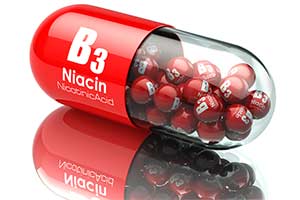Higher iron levels may boost heart health – but also increase risk of stroke
In a series of early-stage studies examining genetic data from over 500,000 people, a team of international scientists, led by Imperial College London, explored the role that iron plays in over 900 diseases.
The results reveal not only are naturally higher iron levels associated with a lower risk of high cholesterol levels, they also reduce the risk of arteries becoming furred with a build-up of fatty substances.
However the research, funded by the Wellcome Trust, also revealed the potential risks associated with naturally higher iron levels. These included a higher risk of blood clots related to slow blood flow blood – a common cause of stroke – and a higher risk of bacterial skin infection.
Dr Dipender Gill, lead author of the study from Imperial’s School of Public Health, said: “Iron is a crucial mineral in the body, and is essential for carrying oxygen around the body. However, getting the right amount of iron in the body is a fine balance – too little can lead to anaemia, but too much can lead to a range of problems including liver damage.”
Dr Gill cautioned the study only looked at naturally occurring iron levels in the body related to genetic variation between individuals – and did not investigate the effect of taking iron supplements. He cautions anyone to speak to their doctor before starting – or stopping – iron supplements.
In the studies, the research team used a genetic technique called Mendelian Randomization to investigate the link between iron levels and the risk of disease. In this process, they sifted through genetic data from thousands of people to identify genetic ‘variants’ associated with naturally higher iron levels. They then investigated whether people who carry these variants, called single-nucleotide polymorphisms, also had higher or lower risk of a range of conditions and diseases, such as high cholesterol and atherosclerosis.
The results, published in the Journal of the American Heart Association and PLOS Medicine, revealed that naturally higher iron levels were associated with reduced risk of both high cholesterol and atherosclerosis.
However, the picture was complicated by further findings from the same study, which revealed high iron levels may be linked to a risk of clots related to slow blood flow, which can increase the risk of certain types of stroke and the condition deep vein thrombosis.
And to add to this, the studies also revealed higher iron levels may also be linked to an increased risk of bacterial skin infections.

Dr Gill said these findings now need to be investigated in patient trials. He explained: “These studies reveal new avenues of research, and present many questions. We are still unclear on how iron affects cholesterol levels, narrows arteries and form blood clots, but we have ideas. One possibility is that the lower cholesterol levels may be linked to the reduced risk of arteries becoming furred. Furthermore, higher iron levels may cause blood clots to arise when flow is reduced, possibly explaining the increased chance of clots.”
He adds that previous research suggests that iron may also play a role in bacterial replication and virulence, which may be linked to the increased risk of skin infections.
Source: Imperial College London
Full bibliographic information
Effects of Genetically Determined Iron Status on Risk of Venous Thromboembolism and Carotid Atherosclerotic Disease: A Mendelian Randomization Study by D. Gill et al.
J Am Heart Assoc. 2019;8:e012994.




